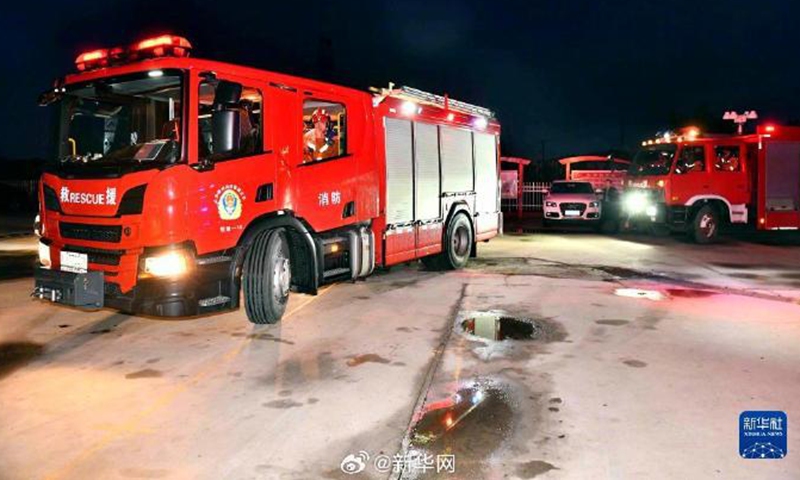Dozens of people have been left injured, with 126 homes destroyed following an earthquake in Pingyuan county in Dezhou, East China’s Shandong Province. The earthquake was the strongest recorded in the province in over a decade.
The Chinese central government has dispatched a working team to guide rescue and relief work.
At 2:33 am on Sunday, a 5.5-magnitude earthquake with a depth of 10 kilometers occurred in Pingyuan. Earthquake department in Shandong revealed that there have been 59 aftershocks recorded so far, with the largest magnitude being 3.0.
Media reported 20 people were slightly injured. Pingyuan County First People’s Hospital has received a total of 21 earthquake-related injured patients as of 6:30 on Sunday morning, most of whom have suffered from skin injuries, abrasions, head injuries, and etc. Currently, there are no critically ill patients.
At present, the 5.5 magnitude earthquake is the main earthquake of this earthquake sequence, with a potential three to four aftershocks expected.
Ma Jun, director of the Beijing-based Institute of Public and Environmental Affairs, told the Global Times on Sunday that the aftershocks would not be as intense as the main earthquake, noting that the frequency of the aftershocks – 59 occurrences – is normal.
Given that the earthquake was of 10 kilometers deep which is relatively shallow, meant that it was felt stronger than it was, and had a greater impact on buildings, Ma said.
He noted that as Shandong had not experienced a major earthquake since 1983, with officials noting that earthquake-proof dwellings and infrastructure needed to be strengthened, dwellings in rural areas remain particularly vulnerable.
The office to guide earthquake rescue and relief work from the State Council and the Ministry of Emergency Management have decided to activate the national level four emergency response for earthquakes and dispatch a working group to Shandong to provide guidance and assistance in earthquake relief and disaster mitigation efforts.
A total of 15 vehicles and 107 personnel from a rescue brigade of Dezhou have been dispatched to the epicenter for rescue operations. The Fire Rescue Brigades from Jinan, Tai’an, Liaocheng, Dezhou, and Binzhou, totaling 24 vehicles and 236 firefighters, as well as the mobile canine search and rescue Team, have completed their assembly. As of now, no reports of casualties have been received, and the extent of the disaster is being further verified.
To ensure the safety of trains, the Jinan Railway Bureau has immediately initiated an emergency response, implementing measures to stop trains within its jurisdiction. It is currently organizing equipment inspections on the relevant routes, resulting in varying degrees of delays for trains passing through.
The Beijing bureau of China Railway has launched a level I emergency response, suspending the Beijing-Shanghai high-speed Railway, Beijing-Kowloon Railway, Shijike and Shide lines, and is organizing a comprehensive inspection of relevant line equipment. Trains passing through these areas will be cancelled or delayed.
Apart from Shandong, there were also reports of tremors in Hebei, Tianjin, and other areas, with some places experiencing noticeable tremors. Many netizens claimed to have been “awakened by the tremors.” Most areas of Beijing, 323 kilometers from Dezhou felt the jolt. Yet Beijing have not reported any losses from the earthquake. After preliminary analysis and assessment, it is believed that this earthquake will not have a significant impact on short-term seismic activity in Beijing.
According to the results recorded by Beijing earthquake network, the highest intensity of the seismic instrument in Beijing is III degree, which is located in Tongzhou district. Most areas of the city felt the earthquake, with no damage found yet. According to preliminary analysis, the earthquake will not have a significant impact on the short-term seismic activity in Beijing, and there is no obvious short-term anomaly likely to impact the capital.
Seconds before the earthquake, many residents in Beijing, Shandong and nearby areas have received an early warning message via mobile phones and televisions.
In recent years, China has stepped up its early warning capabilities for earthquakes. Many residents have installed the apps or programs on their mobile devices, which in most cases offers individuals a precious few seconds to prepare for impact or take emergency action.
The China Earthquake Early Warning Network, jointly built by the Chengdu-based Institute of Care-life — a disaster reduction institute that was established in the aftermath of the 2008 Wenchuan Earthquake — working with the China Earthquake Administration, was able to provide a three second advanced warning to the Shandong city of Dezhou, 17 seconds to Shandong’s Jinan, and 70 seconds to Beijing. The earthquake is the 78th seismic event to be detected ahead of time by authorities since 2011, the Global Times learnt from the Institute of Care-life.
Wang Tun, a professor from Sichuan University and director of the Institute of Care-life, said that since 2010, the earthquake early warning network has covered 2.4 million square kilometers, accounting for 90 percent of China’s densely populated multi-earthquake areas.
(Global Times)




